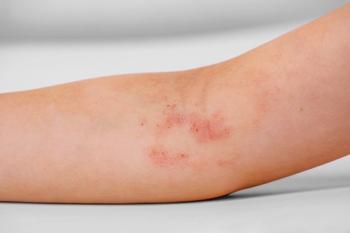
- Consultant for Pediatricians Vol 8 No 8
- Volume 8
- Issue 8
Lesions That Point to Serious Bacterial Infections
Purpuric pustules can present diagnostic challenges. However, the ability to correctly identify these lesions can be of crucial-even lifesaving-importance in caring for ill children.
Purpuric pustules can present diagnostic challenges. However, the ability to correctly identify these lesions can be of crucial-even lifesaving-importance in caring for ill children. The 2 dermal inflammatory processes pictured here are both associated with serious bacterial infections. The lesion on the bottom top
Can you identify the 2 infectious processes?
(A) Disseminated gonococcal infection; (B) meningococcal infection
The early lesions in both gonococcemia and meningococcemia are often dermal infiltrated inflammatory papules with little pus or purpura. Mature lesions may develop varying degrees of purpura, pus, and ulceration.
The progression of the cutaneous lesions of disseminated gonococcemia is shown in
The rash of meningococcemia, which usually begins as a petechial eruption, tends to become more ecchymotic and is characterized by large areas of ischemic necrosis. The rash typically develops on the trunk and lower extremities.
Articles in this issue
about 16 years ago
Isolated Macrodactylyabout 16 years ago
Erythema Toxicumabout 16 years ago
Fish Tapeworm Infestationabout 16 years ago
Persistent Ankle Mass in an Otherwise Healthy 9-Year-Old Girlabout 16 years ago
Practical Barriers to Adolescent Confidentiality: Can They Be Overcome?about 16 years ago
When Johnny Can’t Sleepabout 16 years ago
Diagnostic Challenges Associated With Pediatric Tuberculosis: 2 CasesNewsletter
Access practical, evidence-based guidance to support better care for our youngest patients. Join our email list for the latest clinical updates.














